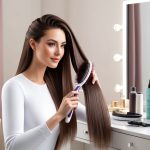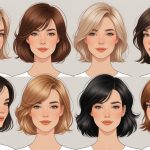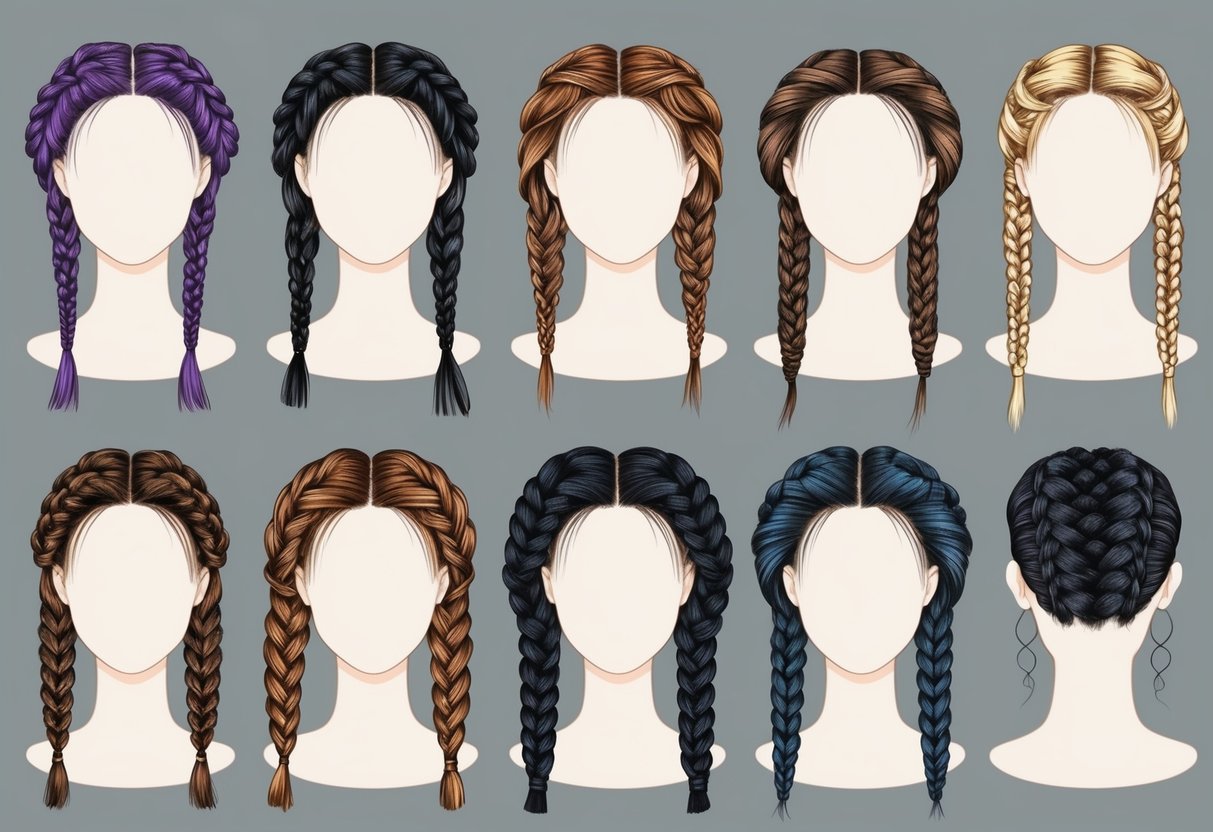
Enhancing Your Braids With Hair Accessories
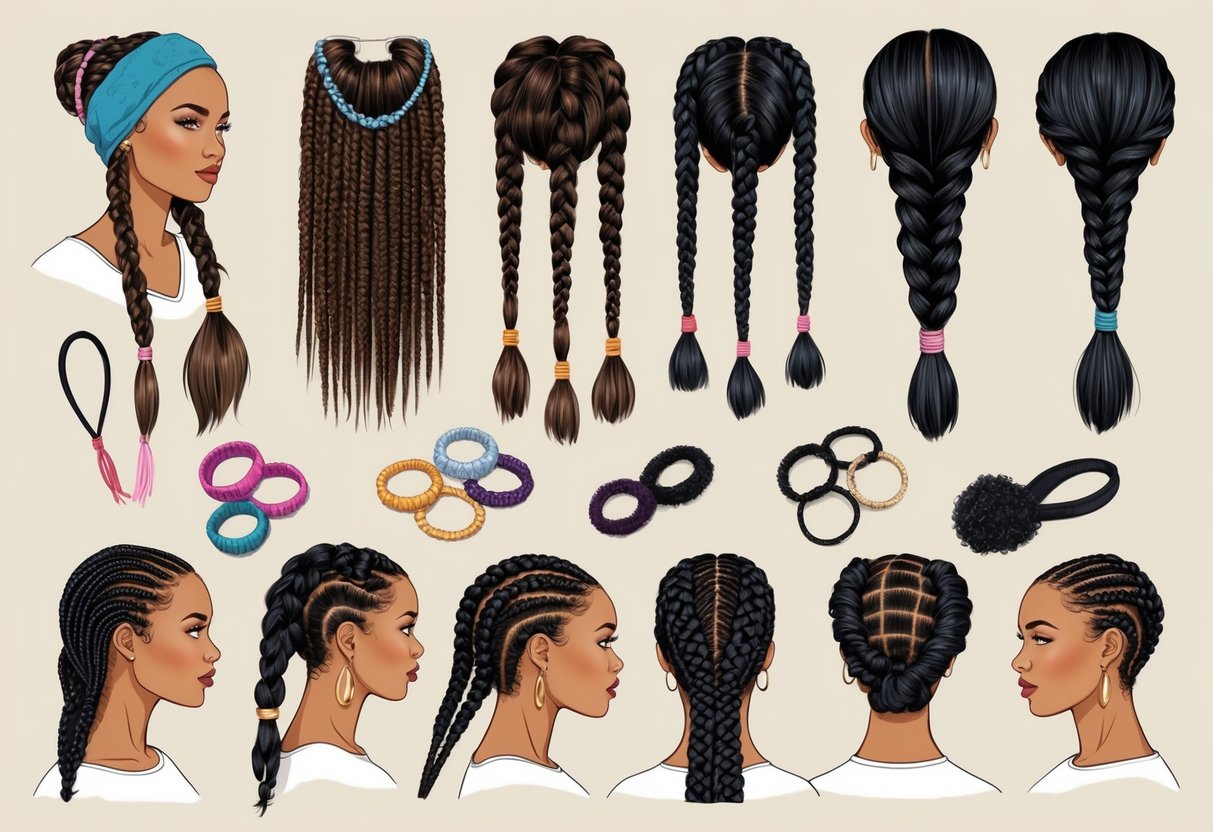
Adding hair accessories can transform feed-in braids, providing style, texture, and personality. Choices such as beads, cuffs, wraps, and scarves offer creative options for any hair length or texture.
Beads and Cuffs
Beads and cuffs are among the most popular accessories for feed-in braids. They create striking visual interest, highlight braid patterns, and allow wearers to personalize their look.
Beads come in various materials like wood, plastic, or metal, while cuffs are often metallic, adding an extra shine to the braids. When choosing beads, consider the braid thickness; lighter beads suit smaller braids, while chunkier beads work best with thicker braids.
Some styles incorporate beads along the length of each braid, while others focus on the tips for a minimalist look. Cuffs are easy to snap onto braids and can be stacked for a bold effect.
Beads and cuffs are also commonly used in Ghana braids, Fulani braids, and other styles that prioritize accessorizing. They can be mixed and matched for unique combinations and seasonal trends.
Using a mix of gold, silver, or colored beads allows for customization and can accentuate both casual and formal hairstyles.
Hair Wraps and Scarves
Hair wraps and scarves add versatility and color to feed-in braids. These accessories can be woven directly into the braids or tied over them to create new textures and patterns.
Wraps come in various fabrics, such as cotton or silk, offering options that work for daily wear or special occasions. Scarves can be used to create headbands, turban styles, or full head coverings.
Different wrapping techniques can help protect hair edges, reduce frizz, and provide added warmth or sun protection when needed. Brightly colored wraps also allow for quick changes in style without rebraiding.
Using hair wraps and scarves not only enhances visual appeal but also serves functional purposes, particularly for those wanting to maintain protective styles. Silk or satin wraps are especially recommended to minimize friction and retain moisture, which keeps hair healthier under the braids.
Popular patterns include florals, geometric prints, and solid colors, allowing the wearer to coordinate their hair with their outfit seamlessly. This makes hair wraps and scarves a practical and stylish addition to any feed-in braid style.
Best Hair for Feed-In Braiding
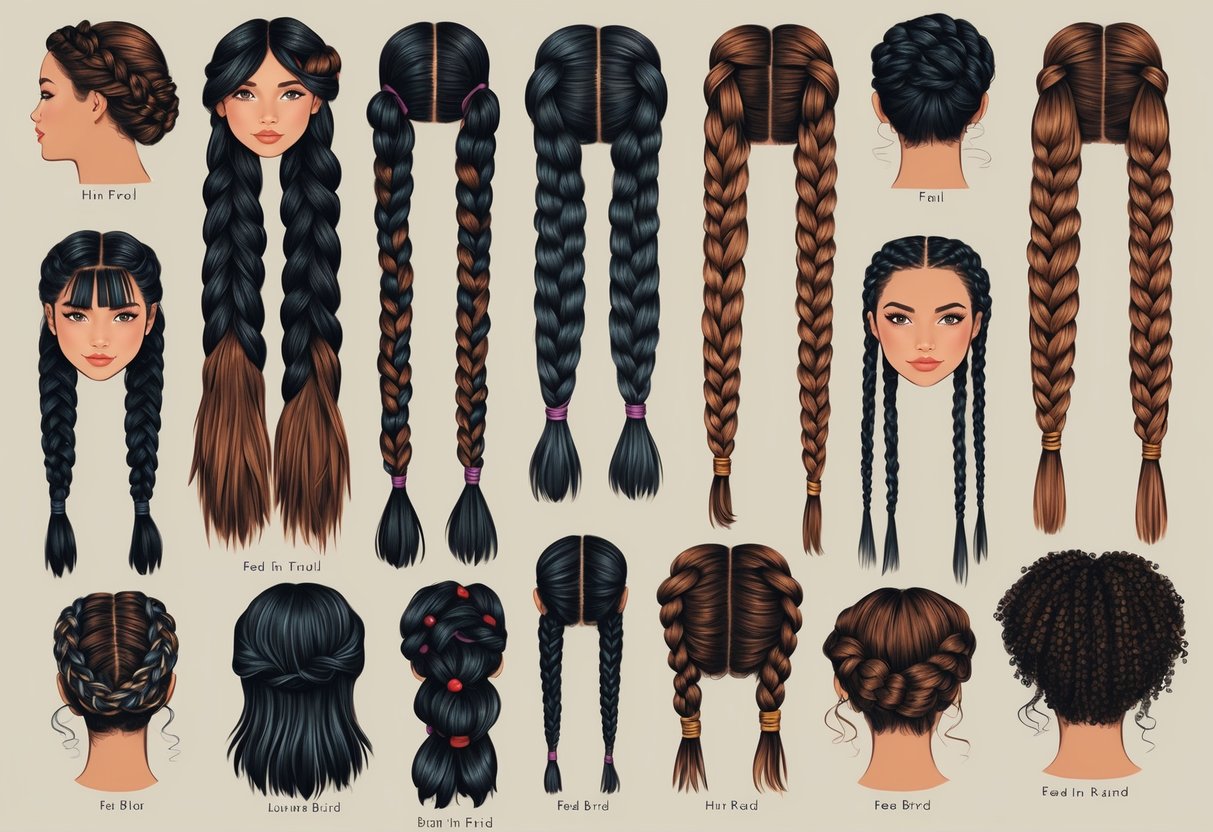
Selecting the right type of braiding hair is crucial for creating seamless, natural-looking feed-in braids. The choice can affect the braid’s appearance, durability, and overall comfort.
Synthetic vs. Human Braiding Hair
When deciding between braiding hair types, the main options are synthetic hair and human braiding hair. Synthetic braiding hair such as kanekalon is widely used for feed-in braids due to its affordability and availability in a variety of textures and colors.
It holds styles well, is lightweight, and gives a sleek, uniform appearance. This makes it ideal for intricate or structured styles and is recommended by stylists for most feed-in braid looks.
For more information on the best hair for feed-in braids, including Kanekalon and other popular options, visit this guide to feed-in braids.
Human braiding hair offers a more natural look and texture that blends well with natural hair, making it a good choice for those who want maximum realism or flexibility with heat styling. However, human hair typically comes at a higher cost and may require more maintenance to prevent tangling and frizz.
It’s often preferred when the longevity and natural feel are priorities, especially for those with sensitive scalps or allergy concerns.
Choosing the Right Hair Extensions
Selecting the right hair extensions depends on hair texture, the desired braid thickness, and sensitivity to synthetic fibers. Many opt for pre-stretched synthetic extensions since they are ready to use without much preparation and provide a finished, tapered end that mimics natural hair growth.
Consider the color match and length when purchasing hair extensions. Pick shades close to the root color or try ombre options for a unique look.
Look for hair that feels soft yet strong—such as kanekalon—for easier braiding and fewer tangles. People with fine or fragile hair may benefit from using lighter extensions to reduce tension and protect their natural strands.
It’s also wise to consult a braider for professional recommendations on the quantity and type of hair extensions needed for the chosen style.
Feed-In Braid Maintenance and Hair Care
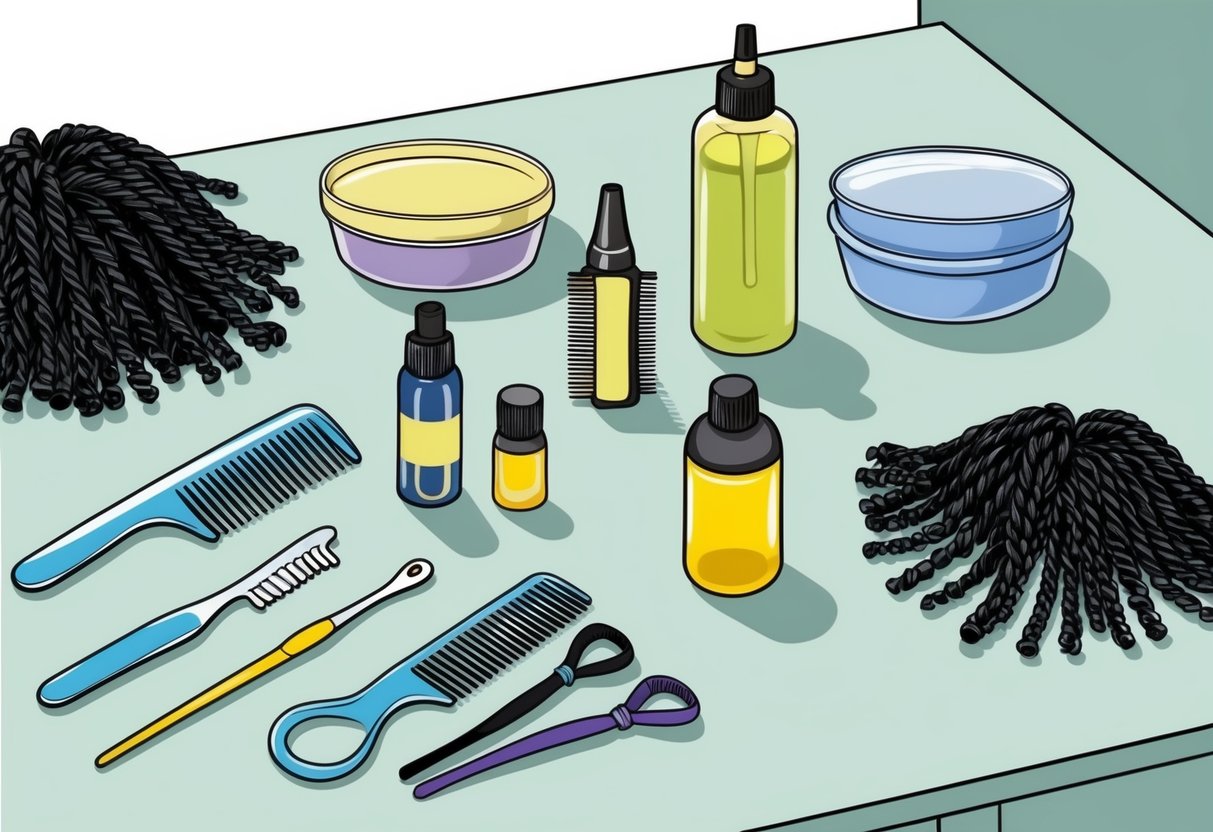
Proper maintenance helps feed-in braids last longer, keeps hair healthy, and maintains a neat, stylish appearance. Effective routines focus on cleaning, hydration, scalp care, and smart protective practices to prevent dryness or buildup.
Daily Braid Care
Daily upkeep ensures feed-in braids retain their fresh look. Start each morning by gently laying down edges with a soft brush and a lightweight, non-alcoholic edge control.
Avoid heavy gels that can cause residue and buildup. At night, wrapping braids with a satin or silk scarf helps minimize friction and frizz.
A satin bonnet or pillowcase is also effective for reducing breakage. If flyaways become noticeable, use a small amount of mousse or gel to smooth them.
Keep braids free of lint and debris by lightly shaking them out and checking ends. Sweat and oil can build up quickly, especially during workouts.
Tying hair up during exercise and cleansing the scalp with a damp cloth prevents this.
Preventing Dryness
Tension and exposure make feed-in braids prone to dryness. Moisturizing is essential, as both the scalp and natural hair beneath need hydration.
Use a lightweight leave-in spray or a mix of water and conditioner, lightly misting hair daily to keep strands supple. Heavy oils should be avoided, but natural oils like jojoba or argan can be used sparingly on braids and scalp to seal in moisture.
Focus on products that won’t cause buildup or weigh hair down. Regular hydration preserves braid flexibility and shine.
Weekly or biweekly scalp massages stimulate natural oil production and help products distribute better. If itching occurs, opt for a braid spray formulated for protective styles to soothe irritation and replenish moisture.
Keeping Your Scalp Healthy
A clean scalp is crucial for preventing itchiness, odor, and buildup. Washing feed-in braids every two to three weeks with diluted shampoo keeps the scalp free of sweat, oil, and dirt.
An applicator bottle helps direct shampoo directly to the scalp for thorough cleansing. Rinsing carefully ensures shampoo is removed without disturbing braids.
After cleansing, a light conditioner can be applied and rinsed out, focusing only on the scalp. Avoid heavy creams or conditioners that linger and encourage residue.
Look for signs of irritation, tightness, flakes, or bumps. These can indicate product buildup, allergic reaction, or excessive tension.
If these issues appear, washing more frequently or using an anti-itch scalp product is recommended.
Increasing Longevity of Your Braids
Long-lasting feed-in braids come down to proactive care and habits that reduce tension and friction. Never pull braids into tight ponytails, buns, or updos that can stress the roots and edges.
Nightly protection with silk or satin coverings reduces frizz and unnecessary loosening. If braids begin to loosen or unravel, small repairs can be done using a crochet hook or carefully re-weaving hair as needed.
Avoid excessive exposure to chlorinated or salt water, as this can damage both synthetic hair and weaken the protective hairstyle. After swimming, rinse braids thoroughly and follow up with a moisturizing spray or light oil.
Touch-ups, especially around the hairline, extend the overall style’s life.
For more information about how feed-in braids can increase thickness and length seamlessly, consider exploring additional resources on braid care and maintenance.

